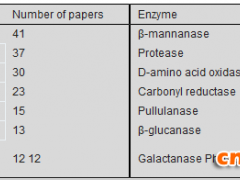人类细胞中的所有生物反应都依赖于酶的作用,它们作为催化剂促使生物反应在几毫秒内发生。那么,如果不存在酶将会怎样?美国科学家近日研究称,在没有酶作用的情况下,某种生物反应的自然发生需要23亿年,相当于地球年龄的一半。研究论文发表于11月11日的美国《国家科学院院刊》(PNAS)。
研究人员称,这一反应对于血色素和叶绿素的生物合成必不可少,当没有酶存在时,它的半衰期是23亿年;当用酶尿卟啉原脱羧酶催化时,反应速度惊人地增加,只需几毫秒就能发生。酶存在与否造成的差别堪比细菌细胞直径和地球与太阳之间距离的差距。
论文通讯作者、美国北卡罗莱纳大学的Richard Wolfenden说:"这个酶对于地球上的植物和动物必不可少。我们所研究的是进化不得不克服的难题,而酶跨越了这一巨大的障碍——半衰期为23亿年的反应。"
了解生物反应所需的时间在多个方面具有重要的意义。它能帮助科学家将酶与人工催化剂进行比较,同时,观测非常缓慢的生物反应也能得到有助于药物研发的重要信息。Wolfenden说:"行使重要催化作用的酶很容易成为药物研发最灵敏的标靶。我们研究的酶非常迷人,因为它们的催化能力是空前的。"
推荐原始出处:
PNAS,vol. 105 no. 45 17328-17333,Charles A. Lewis, Jr.,Richard Wolfenden
Uroporphyrinogen decarboxylation as a benchmark for the catalytic proficiency of enzymes
Charles A. Lewis, Jr. and Richard Wolfenden
The magnitude of an enzyme's affinity for the altered substrate in the transition state exceeds its affinity for the substrate in the ground state by a factor matching the rate enhancement that the enzyme produces. Particularly remarkable are those enzymes that act as simple protein catalysts, without the assistance of metals or other cofactors. To determine the extent to which one such enzyme, human uroporphyrinogen decarboxylase, enhances the rate of substrate decarboxylation, we examined the rate of spontaneous decarboxylation of pyrrolyl-3-acetate. Extrapolation of first-order rate constants measured at elevated temperatures indicates that this reaction proceeds with a half-life of 2.3 × 109years at 25 °C in the absence of enzyme. This enzyme shows no significant homology with orotidine 5′-monophosphate decarboxylase (ODCase), another cofactorless enzyme that catalyzes a very slow reaction. It is proposed that, in both cases, a protonated basic residue (Arg-37 in the case of human UroD; Lys-93 in the case of yeast ODCase) furnishes a counterion that helps the scissile carboxylate group of the substrate leave water and enter a relatively nonpolar environment, stabilizes the incipient carbanion generated by the departure of CO2, and supplies the proton that takes its place.




